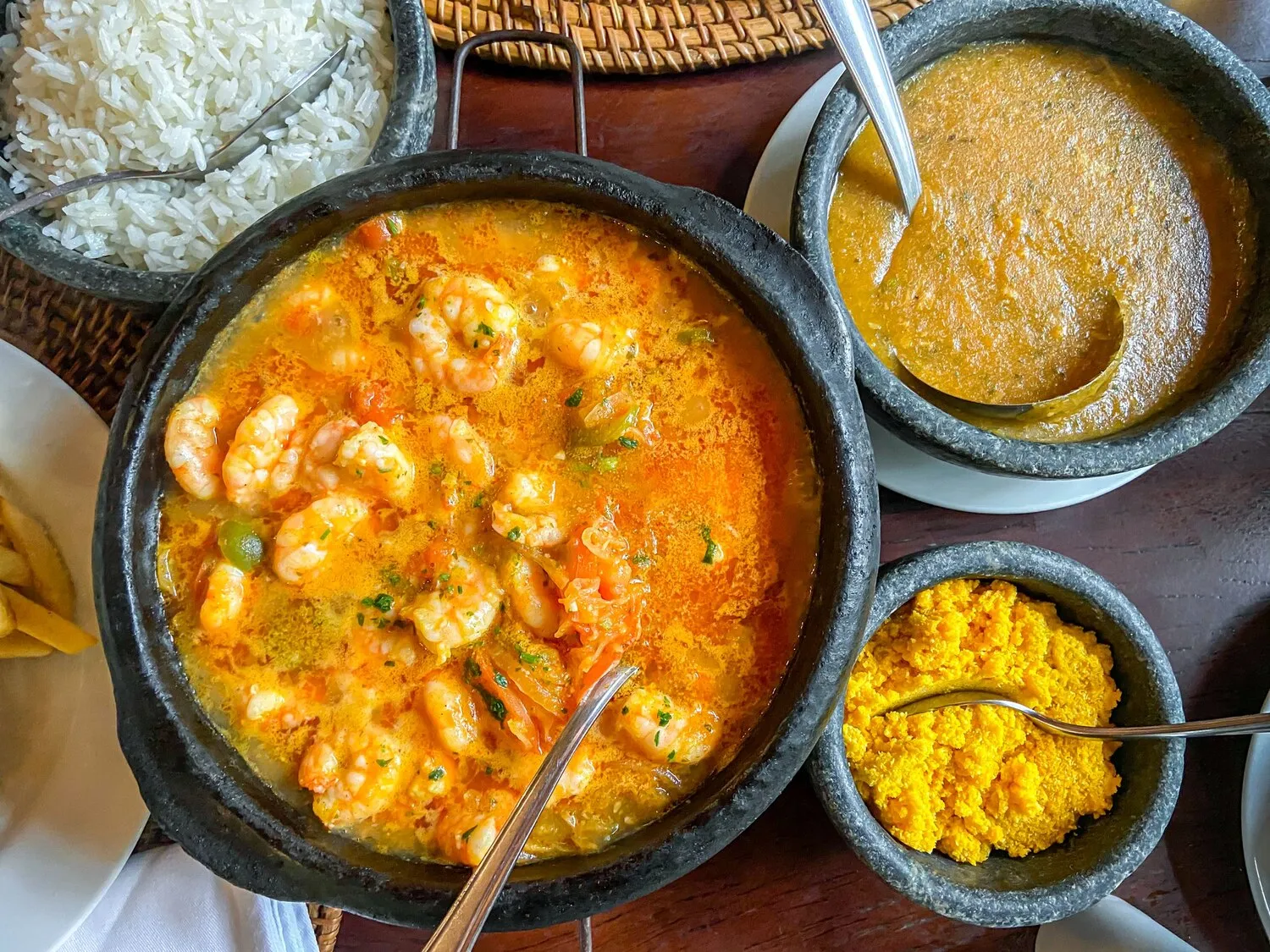
Tripas à Moda do Porto
A traditional Porto dish made with tripe, white beans, and various meats. It's a hearty and flavorful stew.
Nutrition Facts
* The % Daily Value (DV) tells you how much a nutrient in a serving of food contributes to a daily diet. 2,000 calories a day is used for general nutrition advice.
Tripas à Moda do Porto boasts a history intertwined with Porto's resilience and resourcefulness. Legend claims that during the 15th century, when Prince Henry the Navigator provisioned ships for the conquest of Ceuta in North Africa, the people of Porto willingly gave up all their meat, keeping only the tripe. This act of sacrifice earned them the nickname 'Tripeiros' (tripe eaters). While the truth of this story may be embellished, it highlights the dish's association with the city's identity and its population's ability to make the most of limited resources.
Tripas à Moda do Porto is more than just a dish; it's a symbol of Porto's identity, a testament to its history, and a reflection of its people's resourcefulness and generosity. It represents a key aspect of Porto's cultural heritage, often served during celebrations and family gatherings.
The 'Tripeiros' Nickname
The people of Porto are affectionately known as 'Tripeiros' because of their historical association with the dish. This nickname is worn with pride and represents the city's identity and its inhabitants' capacity for sacrifice and resourcefulness.
A Dish of Celebration
Tripas à Moda do Porto is often served during special occasions and family gatherings in Porto, highlighting its role as a celebratory meal that brings people together.
A Symbol of Porto
The dish is strongly associated with Porto and its cultural identity, serving as a culinary emblem of the city and its people. It is a quintessential element of Porto's gastronomic landscape.
Tripas à Moda do Porto presents a complex and savory flavor profile, balancing the earthy taste of tripe with the richness of sausages, the heartiness of beans, and the freshness of vegetables.
The dominant flavor is the savory, slightly gamey taste of the tripe, which is carefully cleaned and cooked to achieve a tender texture. This is complemented by the smoky, spicy notes of cured sausages like chouriço and sometimes smoked sausage, adding depth and warmth. White beans provide a creamy, starchy counterpoint, while vegetables such as carrots and onions contribute sweetness and aromatic complexity. A well-seasoned broth, often including spices like cumin and paprika, ties all the elements together.
Thorough Cleaning is Key
Ensure the tripe is meticulously cleaned to remove any impurities and off-flavors. Soak it in water with vinegar or lemon juice for several hours, changing the water frequently.
Slow Cooking for Tenderness
Cook the tripe slowly over low heat for an extended period (several hours) to achieve a melt-in-your-mouth texture. This allows the flavors to meld together and the tripe to become incredibly tender.
Quality Ingredients Matter
Use high-quality sausages, especially the chouriço, as they contribute significantly to the overall flavor of the dish. Choose fresh, seasonal vegetables for the best taste.
Seasoning is Crucial
Don't be afraid to season generously with salt, pepper, cumin, paprika, and other spices to enhance the flavors of the tripe and other ingredients.
Explore additional Stew dishes and restaurants
Explore StewDiscover top dining spots and culinary experiences in Vila Nova de Gaia.
Explore Vila Nova de GaiaLearn more about the food culture, restaurant scene, and culinary heritage of Portugal.
Explore Portugal